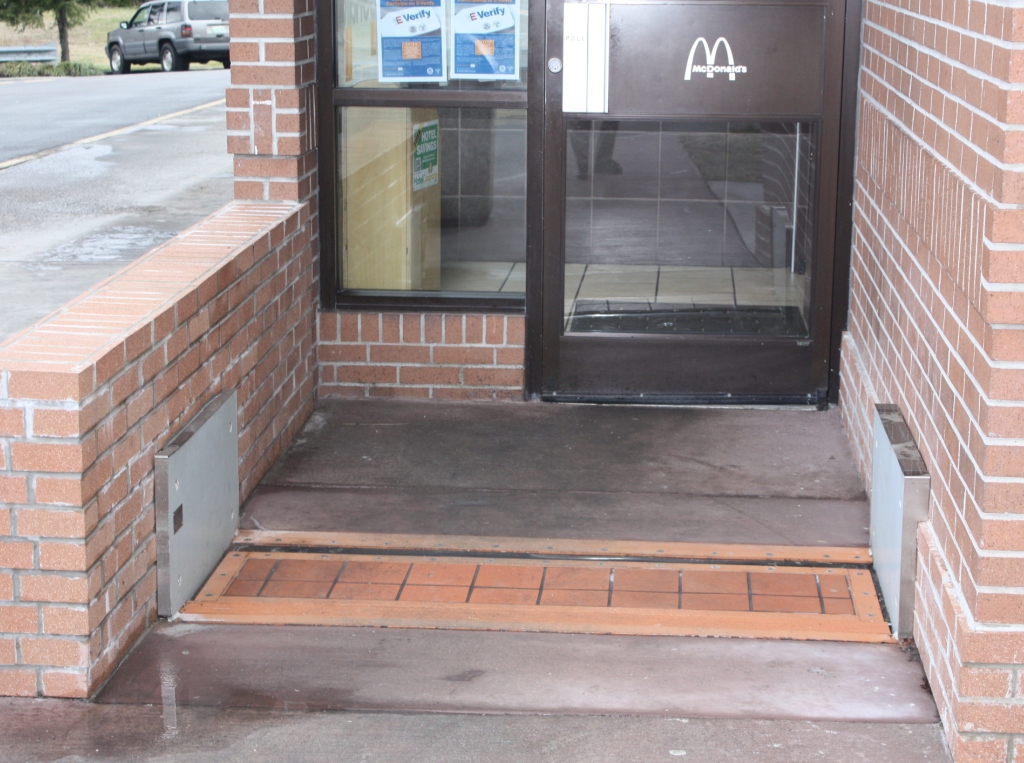

Walter P Moore’s Civil and Diagnostics groups were asked to conduct a site analysis and to fast-track a design that would protect the tower from future flooding. It took seven days to restore operations to 3000 Post Oak, which also meant seven days of downtime for hundreds of employees at one of Bechtel’s major global offices. Unfortunately, all of the building’s critical mechanical systems were located in the basement, and given the structure’s age, typical remediation efforts such as relocating these systems to upper levels was simply not feasible. As the streets adjacent to 3000 Post Oak exceeded their capacity, the deluge flooded the tower’s basement via the below-grade loading dock, with waters reaching 9.5 feet.

The infamous 2015 Memorial Day Flood was heavily concentrated over southwest Houston, and within six hours had dropped 11 inches on grounds already saturated from the previous two months’ heavy rains. Such was the case for 3000 Post Oak, a 19-story commercial office building that houses the oil, gas & chemical global operations of a worldwide engineering firm. Even areas not located within the 100-year flood plain have experienced flooding conditions during two recent events - the Memorial Day Flood of 2015 and the Tax Day Flood of 2016.

From July 30 to 31, the country dispatched more than 3,000 fire commanders and thousands of service members from the People's Armed Police to participate in the rescue operations.Houston, Texas has long been known as the Bayou City, although in recent years has earned a reputation as the Flood City. The All-China Federation of Trade Unions recently provided 15 million yuan (about $2 million), and The Organization Department of the Communist Party of China Central Committee provided 44 million yuan (about $6.1 million) to support disaster relief work.Ī large number of rescue forces, including units from the People's Armed Police, firemen and nongovernmental rescue teams, have been jointly involved in the rescue. On Tuesday, China's Ministry of Finance and the Ministry of Emergency Management earmarked 110 million yuan (about $15.35 million) from the central natural disaster relief fund to support rescue and relief work in the Beijing-Tianjin-Hebei region recently hit by torrential rain. Work teams have been dispatched by the headquarters to Beijing, Tianjin, Hebei, Shanxi and Henan, which have been severely affected by the heavy rain, to help with local flood prevention. On Monday night, the State Flood Control and Drought Relief Headquarters, together with the Ministry of Water Resources and other departments, further deployed flood prevention and disaster relief work in affected areas in the Haihe River Basin. The flood control in the Haihe River Basin, China's largest water system in northern China and one of the seven major rivers in China, has entered a critical period as 13 rivers, including the mainstream and tributaries of the Yongding River, had exceeded warning levels by Monday.Īreas around the Haihe River Basin is densely populated as it runs through Beijing, the capital of China, Tianjin, the Hebei, Shanxi, Shandong, Henan and Liaoning provinces, and the Inner Mongolia Autonomous Region.

So far, the trapped passengers have been safely rescued. Three trains bound for Beijing had been stranded in Beijing's Mentougou District since July 30 due to flooding and mudslides, during which the stranded passengers' food and drink were bought by the crew and rescuers nearby. In order to prevent flooding, Beijing opened the water gate of the Beijing section of the Yongdinghe River on Tuesday. On July 31, the water of the Yongding River surged, and the raging river led to the collapse of the Xiaoqinghe Bridge in Beijing. The rushing flood caused by the heavy rain swept away cars, turned roads into rivers, triggered mudslides, and caused water and power cuts and communication signal interruptions. As of Tuesday, a total of 11 people had died and 27 others remained missing in Beijing, according to local authorities. Floods in many places in Hebei Province and the southwest of Beijing have caused casualties and property losses.īeijing has been drenched with rain in recent days, with the heaviest rainfall since records began 140 years ago, the China Meteorological Administration stated. Triggered by Typhoon Doksuri, torrential rains have battered northern China and the Huang-Huai region since July 29, causing water levels to rise in major rivers.


 0 kommentar(er)
0 kommentar(er)
